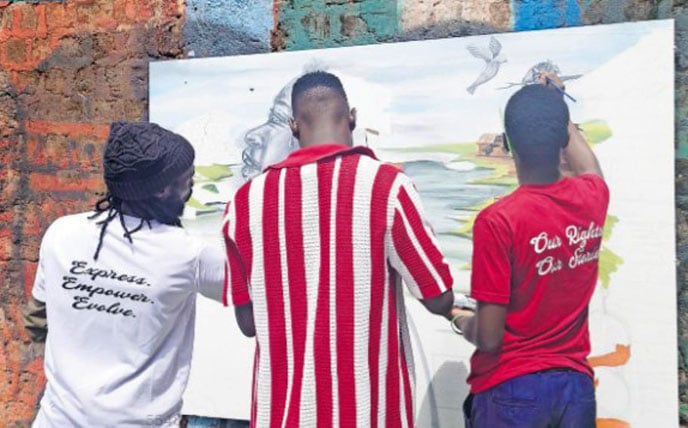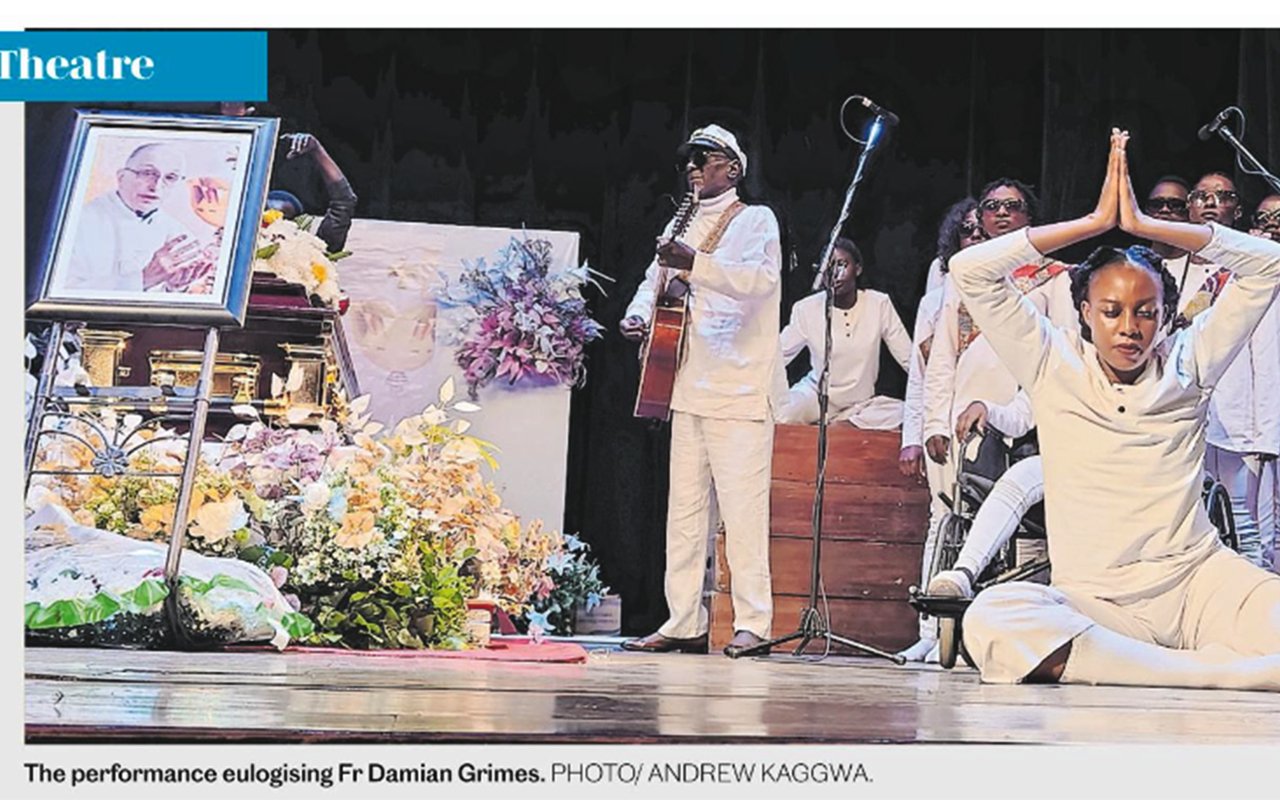Prime
Here is why creativity, mental illness dovetail

A poet performs during the Open Mic Uganda session in 2022. PHOTO/COURTESY OF OPEN MIC X HANDLE
What you need to know:
- Poets’ heightened sensitivity and emotional depth often lead to intense mood fluctuations, which can fuel their creativity but also make them more vulnerable to mental health struggles.
On December 2, 2017, Uganda’s spoken word platform, Open Mic Uganda, paid tribute to the deceased poet Miracle Nantege. She had lived with depression, a condition for which she paid the ultimate price—death.
It has been an open secret in the creative arts spaces that poets, comedians, indeed anybody of the artistic bent, suffer from depression. Indeed, poets are prone to depression because of their sensitivity and sense of their own mortality. Poets are often lonely spirits in the hills of isolation who see society in its primary colours. Colours shaded by the nightmarish darkness of fear and loneliness.
In 1958, American poet Sylvia Plath wrote: “It is as if my life were magically run by two electric currents: joyous positive and despairing negative—whichever is running at the moment dominates my life, floods it.”
This is an eloquent description of bipolar disorder, also known as manic depression, a very serious illness for which no genuinely effective medications were available during Plath’s lifetime.
In August of 1953, at the age of 19, Plath attempted suicide by swallowing sleeping pills. She survived the attempt and was hospitalised, receiving treatment with electro-shock therapy. Her experiences of breakdown and recovery were later turned into fiction for her only published novel, The Bell Jar.
In Green Day’s Boulevard of Broken Dreams, a song about depression of the stripe where life does not live up to our expectations and dreams, we get a feeling of what it means to be depressed.
Again, the famous painting of the same name by Gottfried Helnwein depicts Marilyn Monroe, Humphrey Bogart, James Dean and Elvis Presley hanging out. These performance artists were all known to be depressives of the deepest dye. So, it must be asked, are creatives prone to depression?
Tragic figures
According to the National Library of Medicine, via research by Nancy C Andreasen, MD, PhD, there is a relationship between creativity and mental illnesses.
“The preponderance of the evidence suggests that in these creative individuals the rate of mood disorder is high, and that both bipolar disorder and unipolar depression are quite common. Clinicians who treat creative individuals with mood disorders must also confront a variety of challenges, including the fear that treatment may diminish creativity, in the case of bipolar disorder. However, it is likely that reducing severe manic episodes may actually enhance creativity in many individuals,” states the research.
ScienceDirect, the world's leading source for scientific, technical, and medical research, explains why comedians are given to mental disorders. “Male comedians tended to fit bipolar disorder prognosis and be introverted, while female comedians tended to be vivacious, frenetic and hypomanic (elevated energy levels). Because comedians tune their act to the crowds’ reaction and want to be liked, we might expect them to be high on agreeableness, but because comedy often requires derogation of other people, personalities, ideas, and habits, comedians might score low on agreeableness.”
When it comes to poets, just look at the lives of Plath and Anne Sexton. They both took their lives due to depression. This could well be that not only are they empaths, those who feel and internalise the world’s pain, they are also seemingly wired to be high-strung. Their moods are of a mercurial vintage, so they tend to have highs and lows expressed in their work.
White man’s burden
In Uganda, depression is often associated with 'whites' and suicide with the weak. This has led many depressives to conceal their condition. Others numb their pain with booze and drugs, helped along by the fair-weather camaraderie of the bar.
That's why Butabika Hospital accommodates mental health patients who society mistakenly believes to be drug abusers. Yet their abuse was merely a coping mechanism when faced with the shroud of depression. Society ignores this and thereby continues to lose many who live or have died by depression's dark hand. This also explains the paucity of research on how depression impacts creatives in Uganda.
Still, thanks to the research carried out by the National Library of Medicine and other research-based organisations, we have learnt more than a thing or two regarding a diagnosis-prognosis approach to the mental health of creatives.
“Some feel that the high energy levels and euphoria associated with manic or hypomanic states enhance creativity and may be reluctant to have their euphoria blunted by psychotropic medications,” says Andreasen of the National Library of Medicine.
“Further, it has been argued that experiencing depression may also increase the creative capacity in some individuals. For example, Sir George Pickering has argued that while depressed, a creative person may be in an incubation phase during which ideas may grow. This is then followed by a very creative period after the person emerges from the depression; he cites Charles Darwin, Mary Baker Eddy, Marcel Proust, Sigmund Freud, Florence Nightingale, and Virginia Woolf as examples. Such examples are, of course, anecdotal.”
DELIVERANCE
The second studio album titled Deliverance by American rapper Bubba Sparxxx was released on September 16, 2003. Its powerful lyrics gave creatives hope, amid despair. They, in part, go thus: “I left out from mamma’s with my thumb in the wind The leaves on the ground, winter’s comin again Solid on the surface as I crumble within But legends are made out of vulnerable men So on the brink of death, I still manage livin’ life…”
Creatives must rise above the dark clouds in their lives with a sense of being duty-bound to re-claim their depressed inner selves with soaring messages of hope.
Accordingly, several Ugandan creative showpieces, notably Echo Minds Poets and Laugh Therapy, have set themselves on a path to deliverance. Their art is being used to tackle mental health issues with a healthy dose of artistry. Like American rapper Lupe Fiasco, their artistry has saved their lives and enhanced the lives of many of their fans.
Artists do not have to be depressed in order to be creative; they only need to be alive and predisposed to creating new, meaningful worlds.




